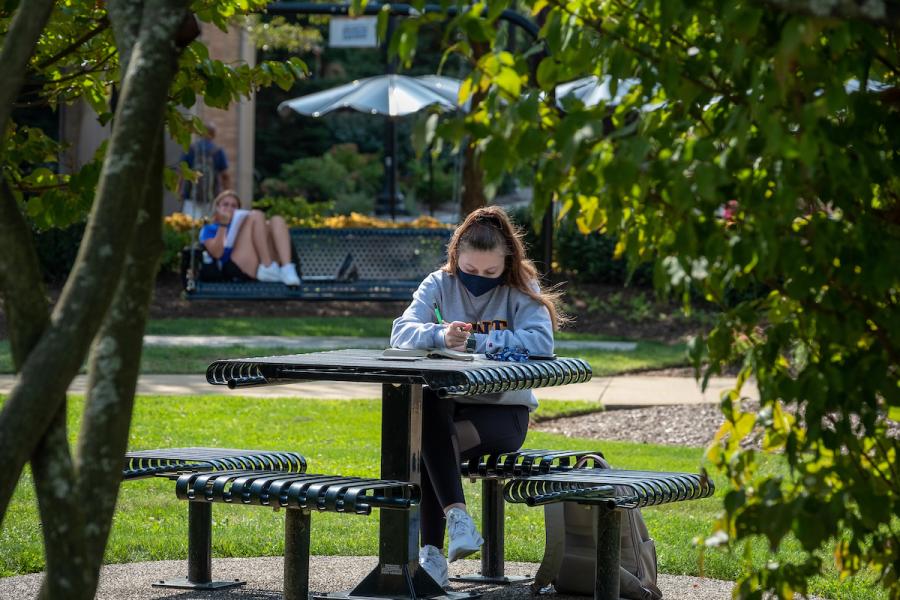Research & Science

As the COVID-19 pandemic approaches a one-year mile marker, the temptation and opportunity to socialize, party, and indulge in public events grows increasingly stronger. Associate Professor Clarissa Thompson received a grant from the U.S. Department of EducationÔÇÖs Institute of Education Sciences to reinforce the dangers of the virus to the public.
Faculty researchers from ├█Đ┐appUniversityÔÇÖs College of Nursing were recently funded by the prestigious Josiah Macy Jr. Foundation with a yearlong PresidentÔÇÖs Grant award totaling $35,000. The goal of their study is to help ensure the competencies of new healthcare providers to facilitate vital family communication at the end of life.

In the medical field, demand for technological advances that can speed data analysis and be less prone to human error continues to increase. Robert Clements recently received a federal grant to continue his work creating a more efficient and improved system to analyze medical data that will benefit not only the biomedical industry but also students at Kent State.

ÔÇťThe pessimistic estimate is that by 2050, antibiotics could be obsolete,'' said Songping Huang, Ph.D., professor in the Department of Chemistry and Biochemistry in the College of Arts and Sciences. Huang and his ├█Đ┐appteam, including Min-Ho Kim, Ph.D., associate professor in the Department of Biological Sciences, are working on closing that chasm with the development of new antimicrobials.

Honors College alumna Jessica Maisano, ÔÇÖ94, B.A., started her career at ├█Đ┐appas a fashion merchandising student before realizing her passion for dinosaurs and dirt was a viable career option. One ├█Đ┐appprofessor would show Maisano that childhood dreams are actually within reach.

Ryan Claassen, professor of political science at Kent State, conducted research during the fall semester finding that American voters think politicians view situations differently depending on party affiliation. ClaassenÔÇÖs research was recently featured in an article from the Record-Courier.

Congratulations are in order for Sooraj Radhakrishnan, Ph.D., a postdoctoral fellow in the ├█Đ┐appUniversity College of Arts and SciencesÔÇÖ Department of Physics who performs research in experimental nuclear physics. His data analysis of some rare particles called ÔÇťcharm quarksÔÇŁ that may have existed in the first microsecond of the Big Bang, the emerging point of our universe, was highlighted in a recent issue of the .

A liquid crystal research group at ├█Đ┐appled by Oleg Lavrentovich, Ph.D., is knocking on the doors of the biomedical industry with its current project. The recent publication of research explains a technique of controlling bacteria movement with liquid crystal structures that could have a potential impact in many areas of research and medical care.

Three faculty members in ├█Đ┐appUniversity's Department of Biological Sciences recently co-authored a 384-page hardcover book, ÔÇťProblem Plants of Ohio,ÔÇŁ published by the ├█Đ┐appUniversity Press.

Researchers Andrew Lepp, Ph.D., and Jacob Barkley, Ph.D., from ├█Đ┐appUniversityÔÇÖs College of Education, Health and Human Services suspected a relationship between boredom and social media use but wondered about cause and effect. Does social media use cause boredom? Or does boredom cause social media use? To answer these questions, they designed an experiment.